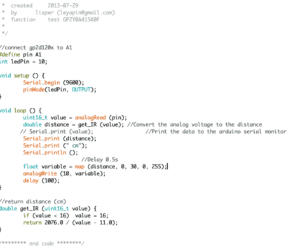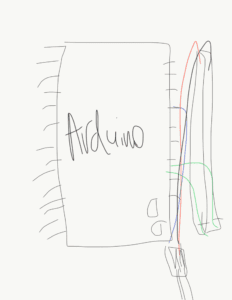For recitation on Sunday, my partner Rodrigo and I built the Infrared Distance Sensor circuit and added LED lights to initiate further interactivity. We followed the instructions on the website and mapped the code according to our liking for the LEDs to fade with our interaction with the sensors. We ran into some trouble when we implemented the mapping code because we didn’t know which syntax to use, either the if/else statement or analogWrite/float which was more complicated to use. Luckily, we figured it out with the help of LAs and were able to create a functional circuit and we played around with different values in the code.
Question 1:
What did you intend to assemble in the recitation exercise? If your sensor/actuator combination were to be used for pragmatic purposes, who would use it, why would they use it, and how could it be used?
In this exercise, we assembled infrared distance sensors, which can be pragmatic for motion detection projects. People who build elevators might be able to use it to detect distance and have LEDs light up in correspondence to the floors arrival/departure.
Question 2:
Code is often compared to following a recipe or tutorial. Why do you think that is?
I think this analogy came about because of the importance of sequence in both coding and a recipe. If one step is messed up, the dish would not taste the same, same as the code, it would not work. However, debugging is similar to going back to the recipe and adding salt or water, to fix the original problem even though some steps went wrong. In the end, the end results are similar for a recipe/tutorial/code, a completed project!
Question 3:
In Language of New Media, Manovich describes the influence of computers on new media. In what ways do you believe the computer influences our human behaviors?
I think that computers influence our human behaviors more than we think. Since we interact with it every day and learned its ‘language’ through code and/or how to type using its keyboards. In addition, computers also change how we interact with each other through text, making communication more fun through emojis/memes, but at the same time, duller without real human interactions.


